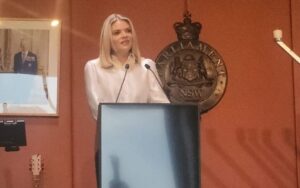
Ukrainian forces have intensified their attacks on military-linked infrastructure within Russia, coinciding with a ceasefire deadline set by US President Donald Trump. On August 3, Ukrainian drones targeted an oil depot in the Russian resort city of Sochi, igniting a significant fire that required the efforts of over 120 firefighters to extinguish. Fortunately, no casualties were reported, according to Sochi Mayor Andrei Proshunin.
In contrast, the situation in southern Ukraine remains dire. A missile strike attributed to Russian forces in the city of Mykolayiv resulted in the destruction of homes and civilian infrastructure, leaving at least seven individuals injured. The regional governor confirmed that three of these injured civilians were hospitalized. Additionally, in the front-line regions of Zaporizhzhya and Kherson, at least three people died, and over 12 were wounded in attacks within the 24 hours leading up to August 3.
These developments come as the conflict approaches its fourth year and as Trump pressures Russian President Vladimir Putin to agree to a peace deal. In July, Trump announced that Putin had 50 days to end the conflict or face severe tariffs on Russian oil and other exports. Earlier this week, he revised that timeline to a new deadline of August 8.
This period has also been marked by a series of devastating attacks on civilians in Ukraine. Notably, on July 31, a drone attack on Kyiv resulted in the deaths of at least 31 individuals. As Ukrainian forces ramped up strikes against Russian infrastructure, officials reported that the recent drone assault on the Sochi oil facility was part of a broader effort targeting energy and military installations across southern Russian cities, including Ryazan, Penza, and Voronezh.
The Russian Defense Ministry stated that its air defenses intercepted a total of 93 Ukrainian drones overnight, with 60 of those intercepted over the Black Sea region. Concurrently, Ukraine’s air force reported that Russia launched 76 drones and seven missiles during the same timeframe, with 61 of those threats successfully neutralized. Sixteen drones and six missiles managed to hit targets across eight locations.
In a significant diplomatic development, Ukrainian President Volodymyr Zelenskyy announced an agreement to exchange 1,200 prisoners between Ukraine and Russia. Zelenskyy made this announcement following a meeting with his national security team, which focused on the negotiation process and the implementation of agreements established during talks with Russian officials in Istanbul. He noted that preparations for a new meeting were underway.
Despite ongoing negotiations, each of the three rounds of talks this year have resulted only in limited prisoner exchanges, failing to deliver a comprehensive ceasefire agreement. The growing hostilities and the looming deadline set by Washington have heightened tensions, particularly as Trump indicated on August 1 that he had deployed nuclear-capable submarines to “appropriate regions” in response to perceived threats from former Russian President Dmitry Medvedev. Medvedev, currently the deputy chairman of Russia’s Security Council, had suggested a readiness to consider nuclear options amid rising tensions.
In response to Medvedev’s provocative statements, Trump clarified that the repositioning of nuclear submarines was a precautionary measure to protect American interests. He referred to Medvedev’s social media posts that criticized the United States for escalating the situation through ultimatums. Trump expressed frustration with Putin’s lack of good faith in negotiations, labeling Russia’s continued attacks on civilian areas as “disgusting.”
While Putin has publicly claimed interest in pursuing peace, his terms have consistently been deemed unacceptable by Ukraine. In a remark that seemed to address Trump’s comments, Putin stated that “all disappointments arise from inflated expectations,” highlighting the complexities surrounding the negotiations.
The consequences of Trump’s August 8 deadline remain uncertain, but he has indicated plans to send his special envoy, Steve Witkoff, to Moscow following a trip to Israel in a bid to facilitate a last-minute agreement. Trump has also hinted at potential further sanctions on Russia, including secondary tariffs targeting nations importing Russian oil. However, analysts have expressed skepticism regarding the feasibility of such measures, particularly concerning major buyers like China and India.
As the situation evolves, the international community watches closely, hoping for a resolution that prioritizes civilian safety and stability in the region.






